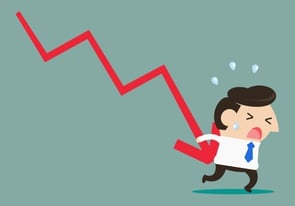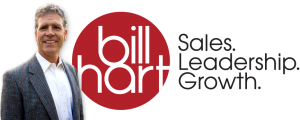 You're probably familiar with Proctor & Gamble, or P&G, as the company is known. It's a multinational manufacturer of products that help people care for babies, wash dishes, brush their teeth, and simply smell better. Its brands include Bounty paper towels, Mr. Clean, Pepto-Bismol, and Old Spice, the purveyor of ubiquitous and strange advertising.
You're probably familiar with Proctor & Gamble, or P&G, as the company is known. It's a multinational manufacturer of products that help people care for babies, wash dishes, brush their teeth, and simply smell better. Its brands include Bounty paper towels, Mr. Clean, Pepto-Bismol, and Old Spice, the purveyor of ubiquitous and strange advertising.
P&G is also the largest advertiser in the world, spending more than $2.5 billion a year. So you can probably understand why P&G's decision in 2015 to switch advertising agencies made executives at Publicis Groupe break out in a sweat. Publicis had been P&G's primary agency for years, raking in hundreds of millions of dollars and enjoying a calm business environment.
Things got a lot more volatile after the announcement.
Publicis had to retrench and figure out how it would start growing its business again. It wasn't pretty. Its stock value took a tumble and people lost their jobs. But the agency learned from losing its largest client and is making a comeback.
You might not ever lose a client worth hundreds of millions of dollars, but you might find yourself in a position of having to grow your business in a volatile business environment. Here's how you can do it:
Focus on customer-aligned selling
One of the lessons Publicis learned (the hard way) is that sometimes business isn't always about the bottom line.
When P&G pulled the plug on Publicis as its primary advertising agency, P&G's global brand officer cited a need to reach copious amounts of people with greater precision. The executive said Publicis was good at advertising, but it just wasn't meeting P&G's needs.
The bottom line here is that even if Publicis had been willing to reduce significantly its fees, P&G probably would have taken its advertising dollars to a new agency because Publicis wasn't meeting its needs.
The lesson: Don't focus so much on cost. Instead, focus on meeting your customers' needs. It's called customer-aligned selling, and it's what customers big and small want.
Implement top-down training
As Publicis discovered, it's a brave new world. Gone are the days when a sales team could cut through the clutter with a sledgehammer. Today, your executive sales training needs to teach people to cut with surgical precision using mental tools that are as sharp as scalpels.
And the only way to ensure that your leaders are as sharp as possible is to invest in cutting-edge executive sales training. Then you've got to make sure that your executives participate in the executive sales training and pass along their newly found knowledge to the people they supervise.
Focus your executive sales training on teaching employees how to understand the way customers think, buy, and make decisions – and then teach your team to adjust its approach to accommodate for their customers' preferences. It's a surefire way to differentiate your sales executives from other companies' salespeople. Your team won't be selling; it will be solving the real problem.
Don't sweat it
Were Publicis executives worried when they lost P&G (and the seemingly never-ending Old Spice advertising dollars)? Absolutely. Did they sweat it? Probably.
But they also made sure to become a source of stability and solutions for their employees as well as their clients. Remember, change doesn't just cut one way. If a volatile business environment is affecting your company, it's probably also affecting your clients' companies.
Stay calm. Don't sweat the small stuff. Understand your clients' needs, be positively proactive, and whatever you do, don't make your clients dread your calls.


